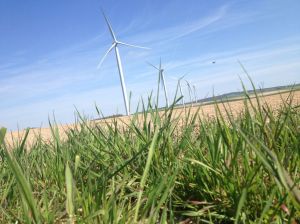Last year at the 21st United Nations Conference of Parties (COP21) in Paris, 195 countries negotiated a global agreement to address climate change. The agreement does not stipulate specific emissions reduction targets, unlike its predecessor, the expired Kyoto Protocol. Instead each negotiating party was asked to voluntarily submit their Intended Nationally Determined Contributions (INDC) for reducing global emissions.
New Zealand’s INDC commits to reducing greenhouse gas (GHG) emissions to 30-percent below 2005 levels by 2030. Currently, renewables comprise around eighty-percent of New Zealand’s electricity mix. The government plans to increase this to ninety-percent by 2025, following the closure of the two remaining large-scale coal-fired power plants before 2018.
This low-carbon electricity generation is a huge advantage. It might be exploited to decarbonise the transport sector, which produces seventeen-percent of New Zealand’s total GHG emissions. New Zealanders depend heavily on road transport. This is due in part to having a widely dispersed population. Fuel efficiency standards already apply, targeting heavy diesel vehicles for road freight in particular. Fully electrifying public transport networks in Auckland and Wellington, as well as providing incentives for private ownership of electric vehicles, would go some way to reducing GHG emissions from the transport sector.
Yet agriculture contributes almost half of New Zealand’s total GHG emissions. The sheer size of the agricultural sector is impressive given the island nation’s size and population. New Zealand produces around a fifth as much milk as the US – a country seventy times more populous. Agriculture is also behind New Zealand’s high carbon intensity per capita – fifth among industrialised nations.
Nevertheless, New Zealand is one of the world’s most efficient agricultural producers. Milk production has trebled since the 1990s though methane emissions from cattle doubled. New Zealand has been successful in researching and adopting efficient farming practices. This includes effective pasture management, and breeding and feeding animals to yield more milk and meat. The New Zealand Agricultural Greenhouse Gas Research Centre is investigating new means to breed or feed sheep and cattle so that they produce less methane, or introduce enzymes to their stomachs, through harm-free drug treatment or vaccination, that reduce their methane emissions. The government has committed $48.5 million to the New Zealand Agricultural Greenhouse Gas Research Centre before 2019. A further $45 million is earmarked for the Global Research Alliance on Agricultural Greenhouse Gases. These institutes promote technologies and practices to reduce agricultural GHG emissions worldwide.
Reducing New Zealand’s agricultural emissions is a significant challenge. Until better technology is developed and widely deployed to capture or mitigate agricultural emissions the government does not expect that aggregate agricultural emissions will be reduced substantially beyond 2030. In the same vein, low-carbon technology must be widely deployed within the transport sector to encourage further emissions reductions post-2030.
This is why the New Zealand government supports a global carbon market. Currently an Emissions Trading Scheme (ETS) operates in New Zealand. Transport fuels are included to incentivise less carbon intensive forms of transport, but the scheme excludes pastoral agriculture. The inclusion of this sector would significantly affect New Zealand’s global competitive advantage and exports.
New Zealand’s agricultural emissions are ultimately associated with meat and dairy products consumed elsewhere in the world. Almost all agricultural produce is exported. New Zealand agricultural producers could not pass on the cost of carbon to consumers even if they were required to participate in the NZ ETS, since China, the US, Australia, Japan, the UK and other importers are liable to seek lower-cost supplies in the global marketplace. If other agricultural exporting countries were required to integrate a carbon price into their sales then the playing field would be more even. In fact New Zealand would have an advantage as one of the more productive agricultural exporters. This would also incentivise low-carbon farming and food production globally.
Currently, the electricity sector is leading the charge to decarbonise the world’s economy by encouraging the uptake of renewables. Yet agriculture comprises 14.5 percent of global GHG emissions. To realise more ambitious reductions in the next decade and beyond, significant research, development and funding needs to be directed towards agricultural technology and practices.
Or we might consider the vegetarian’s solution to climate change. Demand for meat has been rapidly rising in developing and emerging economies including China, India and Brazil. Though a reversal of this trend – and reduced global demand for meat and dairy – may not be the solution that the New Zealand government pictured.

NZ could export agricultural products clearly labelled low carbon or better still carbon neutral and be able to demand a higher price because of it. Thus the argument that agriculture shouldn’t be in ETS falls over.
LikeLike